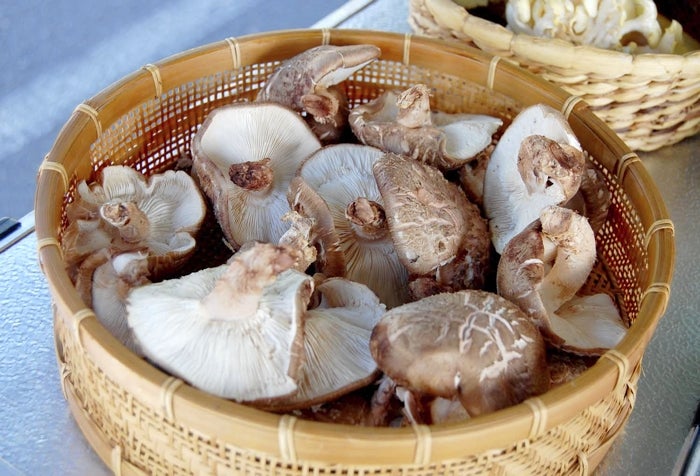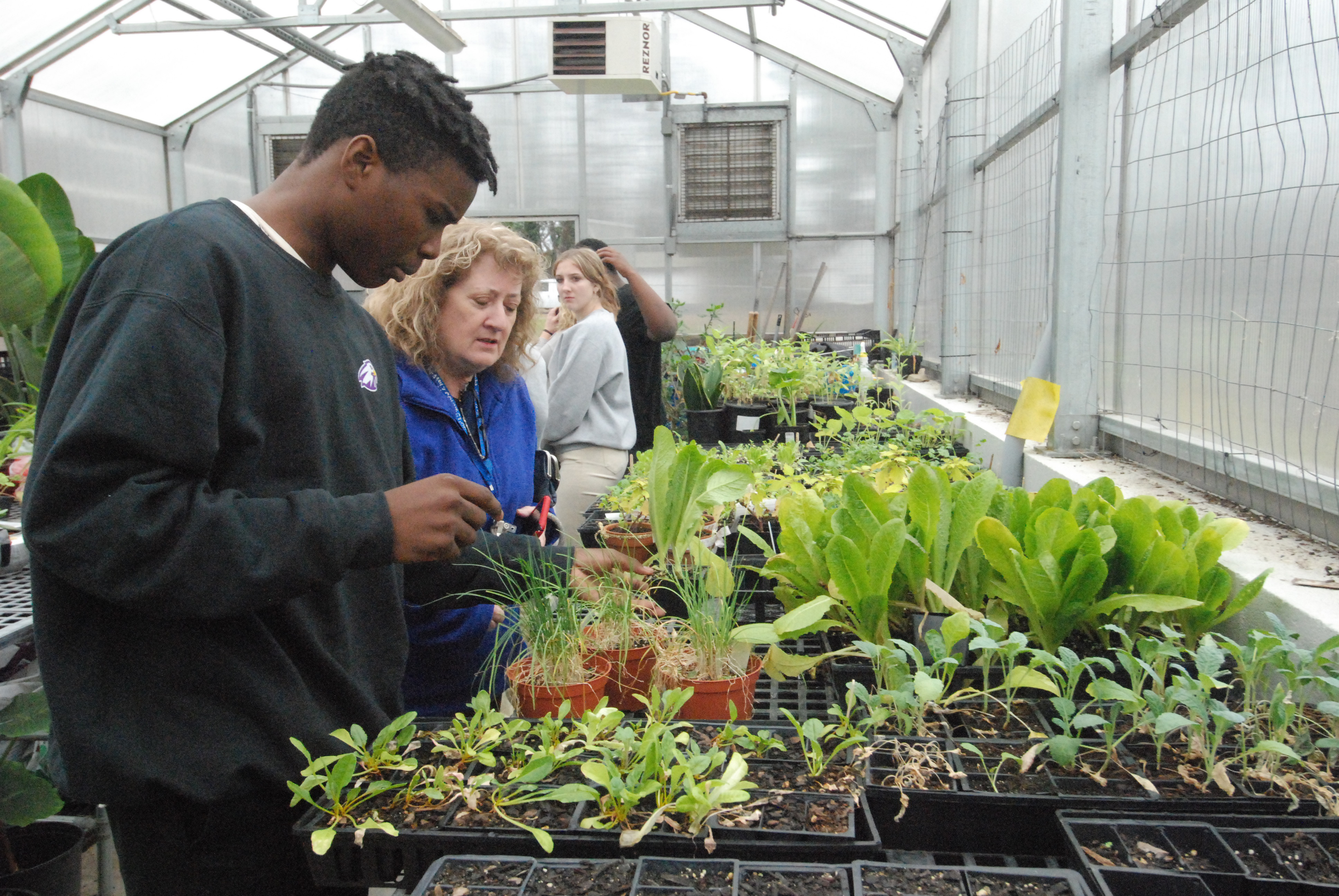Mushrooms popping up at Farmers Market
Published 12:00 am Tuesday, June 2, 2015

- Deirdre Parker Smith/Salisbury Post Fresh shiitake mushrooms from Upsidedown Farms at the Salisbury Rowan Farmers Market, grown in Cleveland.
By Deirdre Parker Smith
deirdre.smith@salisburypost.com
We love fungus for dinner — if it’s in the form of healthy, delicious mushrooms, thanks to Upsidedown Farms in Cleveland.
Paula and Ron Herion, both retired, were not ready to stop going. They learned about growing gourmet mushrooms and just happened to have some trees that would make a good host.
Danelle Cutting, an agent with Rowan Cooperative Extension, recently wrote about the method of inoculating logs with mushroom spawn and growing a crop at home. Paula thinks one of the photographs was of their mushrooms.
Paula’s brother raises mushrooms in Watauga County and enjoys it, she said. “We got interested, so we started cutting trees in February (last year), we inoculated them in March and April, and by late August,” they had fresh mushrooms. “Sometimes it can take a year to get them going.”
They raise four different kinds — shiitake, their main mushroom, golden oysters, pink oysters and lion’s mane. The lion’s mane, renowned for its flavor and health benefits, has not started producing yet.
They also have reishi, a mushroom known for its medicinal properties.
“The lion’s mane is supposed to be good for the nervous system. … It’s been used in treating patients with neurological damage from accidents. The shiitake is anti-inflammatory.”
Mushrooms grow well on oak and sweet gum logs and the Herions had sweet gum on their fence line. A lot of people dislike the tree for its prickly seed pods. They had those trees cut up, which they then inoculated with mushroom spawn (don’t worry, there’s no quiz at the end).
Paula says the logs need to be 3-8 inches in diameter. “Some tree trimmers have donated logs to us.” And they’re always on the lookout for more, such as oak. Pecan and ironwood are too hard. Oyster mushrooms grow well on poplar.
Their goal, at Upsidedown, is to help students with Down Syndrome by getting them started growing mushrooms. They have a 10-year-old grandson with Down Syndrome.
“It used to be people would hire Down kids, but now with all the insurance and liability, they’re more hesitant. If they have a small business of their own, it makes life better for them.”
Growing mushrooms isn’t that hard; it requires patience and a little planning.
The logs can be placed in the shade or in what Paula calls little sheds, so there’s no direct sun. They have some under pines and pecan trees. They have a system to mist the logs from underneath to make sure the wood is soaked.
“You remember in April, when it rained Wednesday, Thursday, Friday, Saturday and Sunday? We picked 40 pounds of mushrooms. Then the logs have to rest, so for four weeks, we had no mushrooms.”
That’s why what they’re selling at the Farmers Market is dehydrated — a good way to preserve mushrooms.
“We should have some fresh shiitakes this week.” The oyster mushrooms have been fresh.
Logs need a good soaking for 12-24 hours to get saturated. A dryer log can produce mushrooms, but “they look funny. Still taste good.” They use a tag system to keep track of what got soaked when.
Mushrooms can produce year-round, but spring, summer and fall are the typical season. During the winter, they might get five mushrooms a week, not the 40 pounds that grew in the rainy season.
Paula likes to simply sauté shiitakes with peppers, squash and onion, maybe some carrot, in butter and olive oil, then add fish sauce (available in most grocery stores) right at the end.
If you’re using the dehydrated mushrooms, you might want to soak them in a bit of water or broth before sauteeing. Fresh ones can go right in. A sauté of fresh vegetables and mushrooms would make a great, light meal for those hot summer nights.
Ron likes to cut the shiitakes in strips and dip them in water, then bread them with House Autrey chicken breader and fry them.
Either Ron or Paula or both will be at the Salisbury Rowan Farmers Market as long as they have mushrooms.
They sell for $16 per pound. “I know that sounds like a lot,” Paula says, “but it takes a lot of mushrooms to make a pound. And you can buy any amount you want. You can just pick out what you want and we’ll weigh it.”
Some of those dehydrated shiitakes went into a recent lamb stew. Soaked in a little chambourcin, a dry but flavorful red wine made across North Carolina, the mushrooms plumped after just about 10 minutes and were meaty and delicious. In fact, shiitake are very satisfying and would make a great meat substitute if you are a vegetarian or cooking for one.
Here are some other ideas for shiitakes:
• Sauté them along with Swiss chard or kale for a meaty addition.
• Add a handful or two to marinara sauce.
• Fettucini Alfredo with mushrooms and asparagus
• Mushroom soup or creamy mushroom soup
• Add to any stir fry recipes
• Grill some to top burgers.
• In soups and stews
• Mushroom omelette, with some gruyere cheese.
• Add some to sausage gravy and make it a gourmet delight.
Oyster mushrooms are a little more delicate, but can be used in salads and stir-fries, or lightly battered and fried. Just tear them into the size you want and use your favorite batter recipe, perhaps a light tempura batter such as this one
- 3/4 cup cornstarch
- 1/4 cup flour
- 1 teaspoon baking powder
- 1/2 teaspoon salt
- 1/4 teaspoon pepper
- 1/4 cup water
- 1 egg, slightly beaten
-
- In bowl mix first 5 ingredients; add water and egg and then stir till smooth,.
- This batter is enough for 4 cups vegetables or 1 pound of fish or meat cut up.





